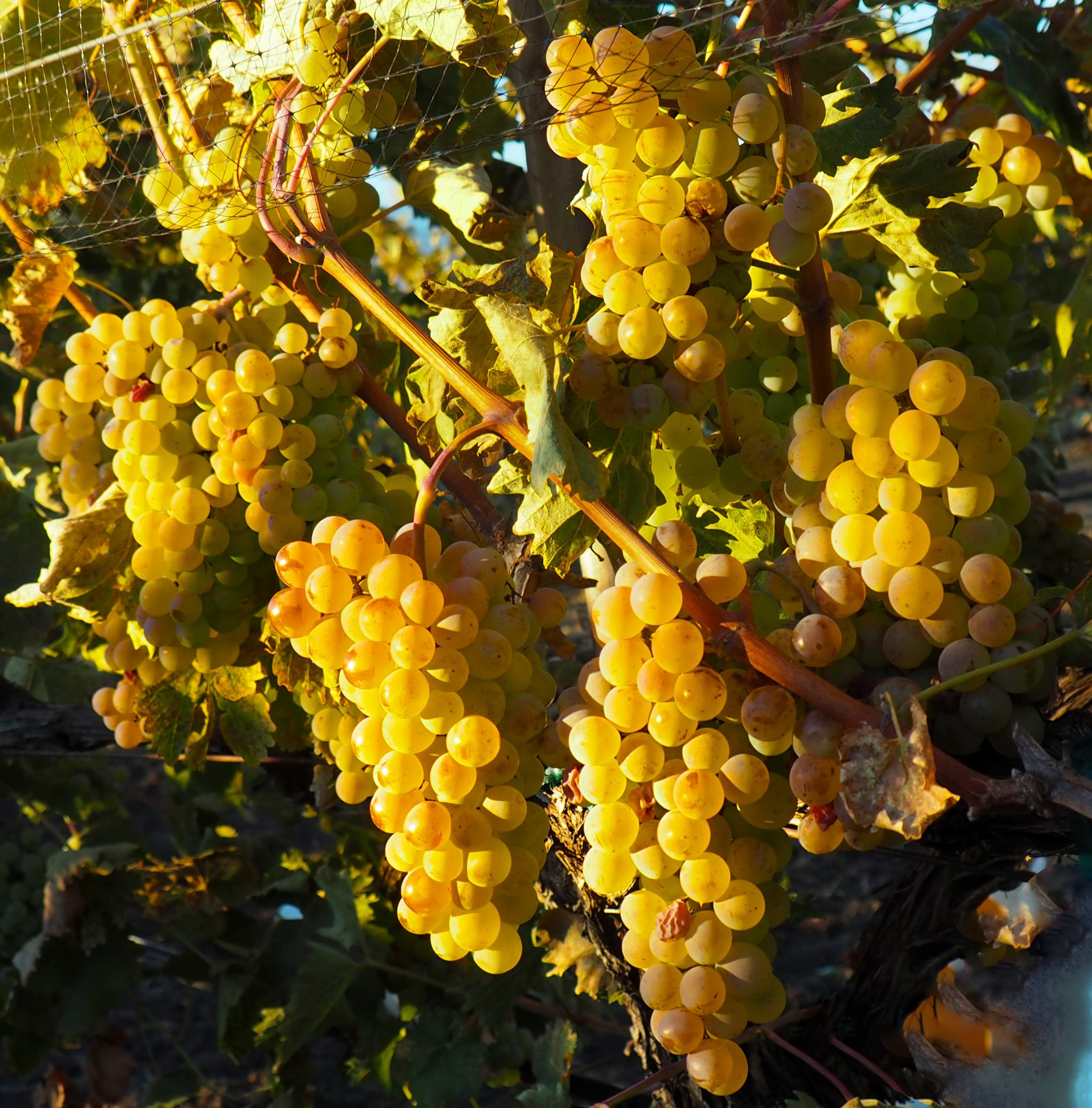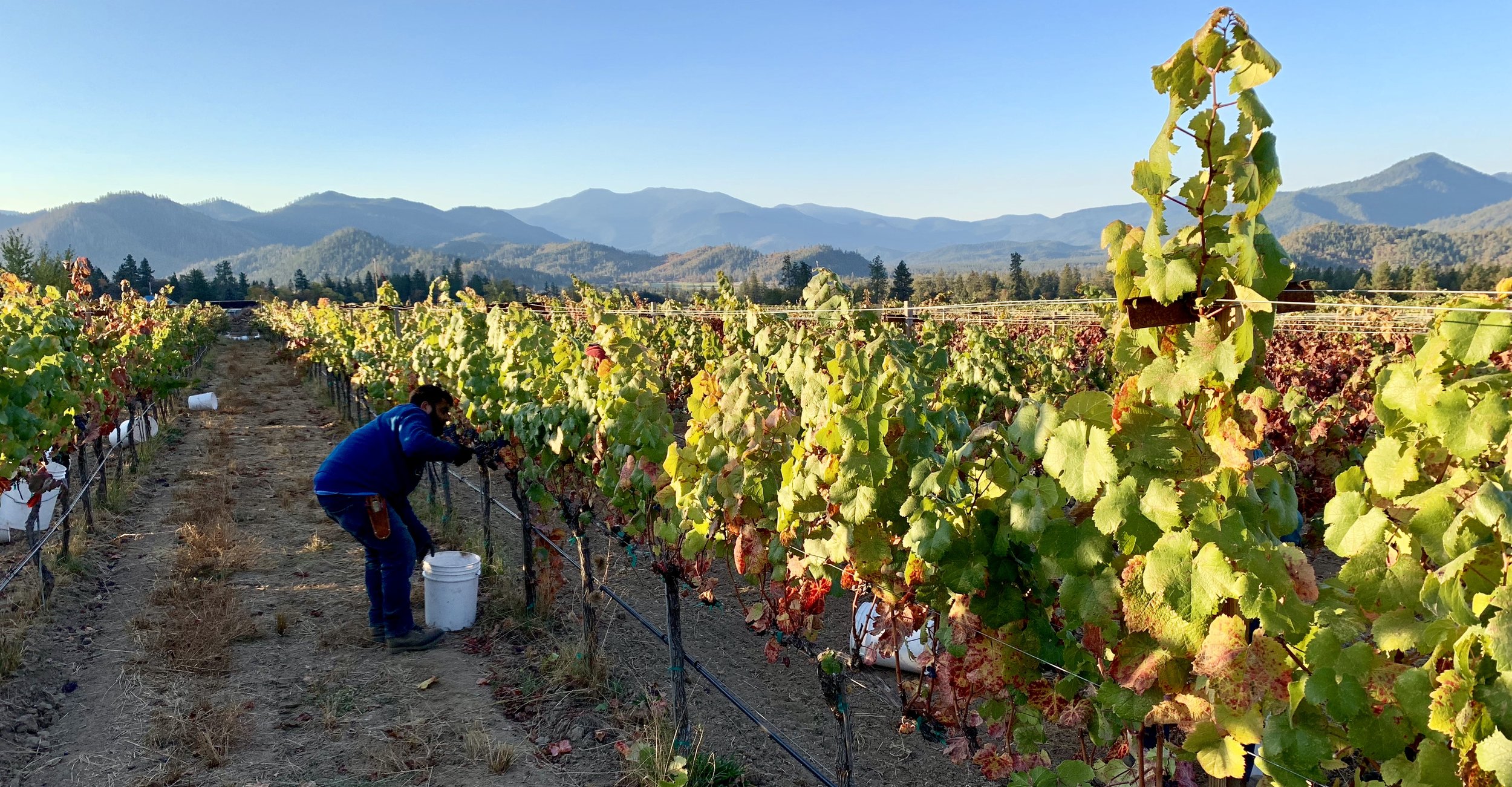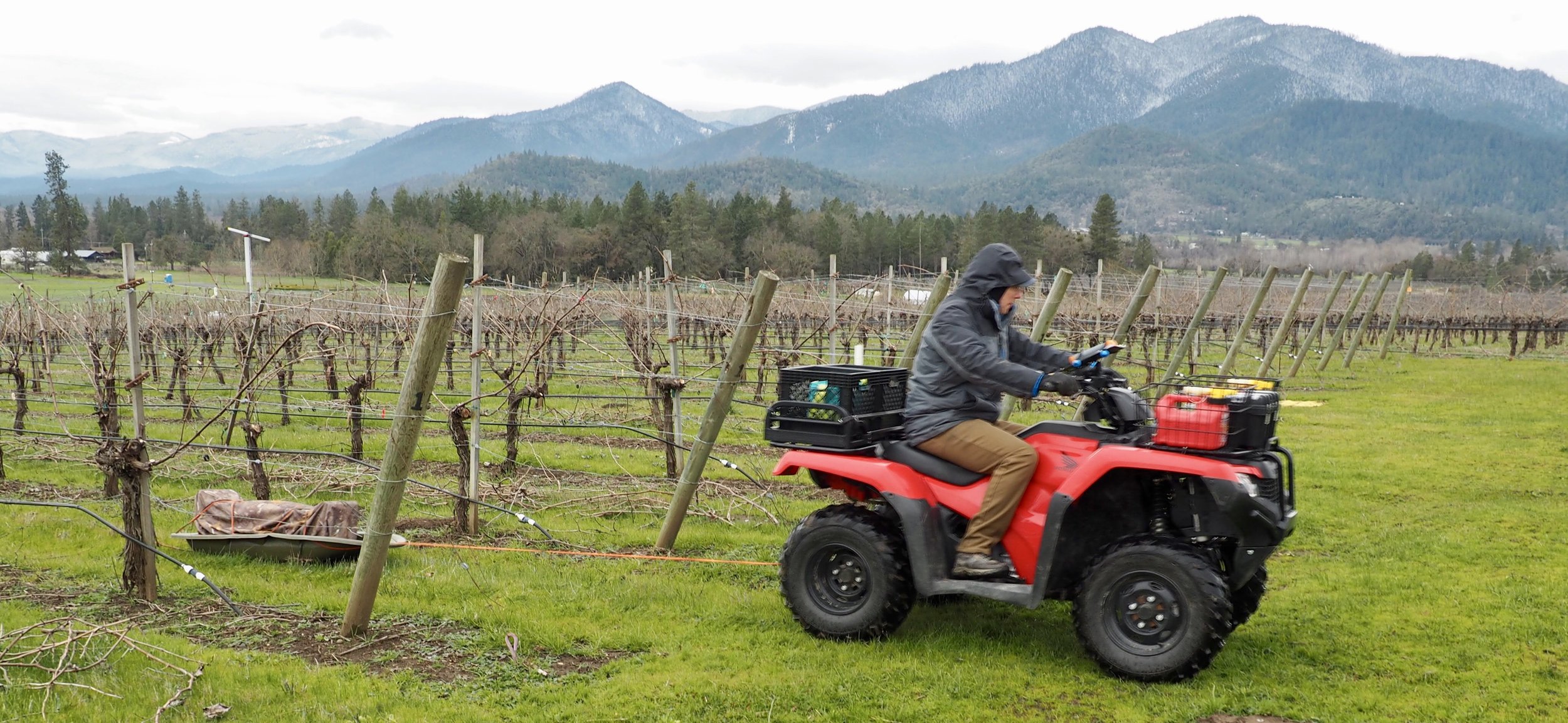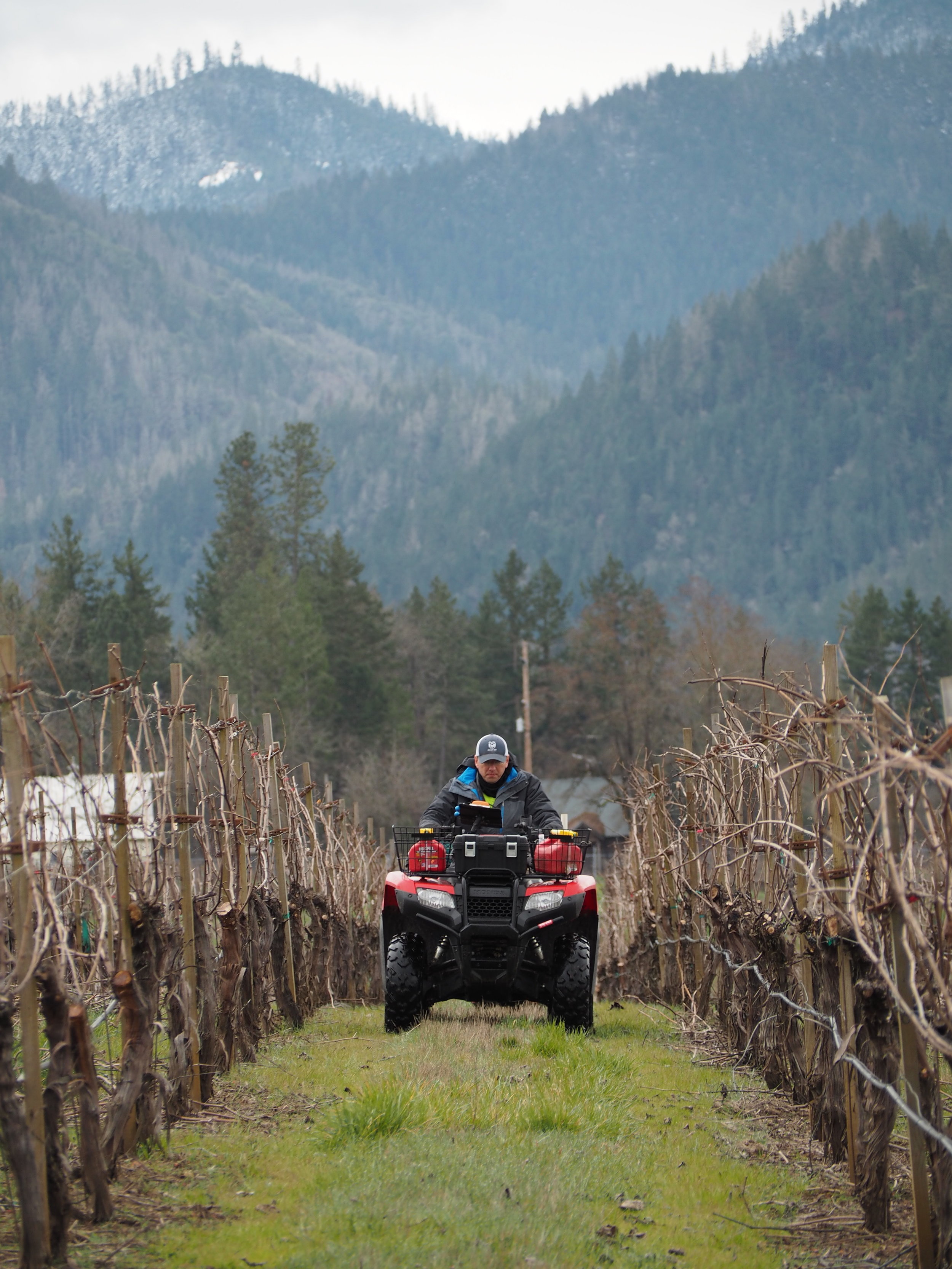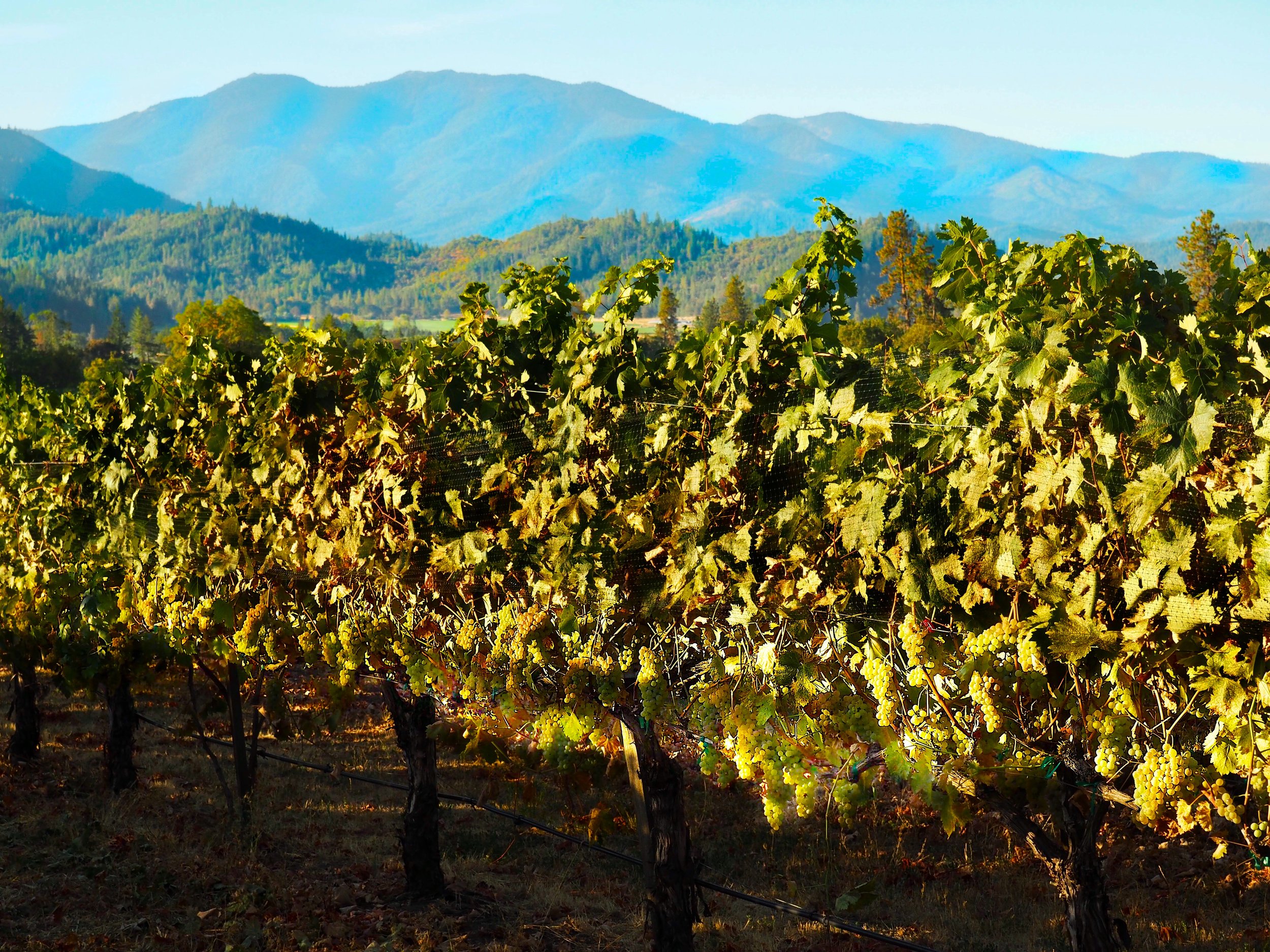And Now for Something Completely Different
Well, that was interesting. Goodbye 2020.
I was really looking forward to 2020. It was going to be a benchmark year as, after three years of intense effort we were going to receive our full Demeter Biodynamic® Certification. Finally, Troon Vineyard, always a vineyard with unfulfilled potential, was going to show what it could do.
Obviously, far, far more important, and more terrible, things happened.
In late February, I was on the Slow Wine Tour as we had achieved another Slow Wine award at Troon Vineyard. San Francisco, Seattle and Denver in four days. Then, during the first week of March, while I was in San Francisco for the Oregon Wine Trail tasting event, I was unnerved to see the desk clerk at my hotel was wearing a mask when she checked me in. Then, at the packed event, people made nervous, feeble jokes about not shaking hands, while making clumsy attempts at bumping elbows. COVID had arrived.
Then everything imploded.
Our tasting rooms and our restaurant customers were closed down, sales events were canceled and the world came to a stop. Or so it seemed at first.
While everything else closed, the farming just kept going. Farms can’t stop for pandemics. The winery became an eerie place. Most days I was alone in the offices and vineyard crew was spread out over the entire farm. It is easy to social distance on one-hundred acres. The cellar team would alternate days so only one person at a time was in the cellar. Despite the challenges, the work got done.
Actually, the work in the vineyard was a comforting thing. With the entire world in an uproar, the quiet and beauty of the vineyard and the surrounding mountains made it a calming and safe place.
Selling wine was not a safe and calming place. A major segment of our customers simply vanished overnight as restaurants and wine bars were shuttered. For a small biodynamic winery producing wines from varieties that are not mainstream commercial pop hits, this was not a good thing.
But then something very special happened.
Our regular customers, wine club members and locals, stepped up to support their local businesses when they needed it most. Our walk-in and online orders took off. Then there were our retail store customers who could have settled for the big, well-known commercial brands, but stuck with small producers like us. It is a favor we will do our best to repay forever.
Then, thankfully, good weather arrived.
In summer things felt lighter as we could have outdoor tastings at our tasting rooms and the energy that our guests brought to Troon revitalized our team. We are lucky to have a large patio and lawn at the winery and a courtyard at our Carlton tasting room. Outdoor tastings were not going to be an issue, as even in normal summers everyone prefers to be tasting outside. Social distance was not a problem as we easily spread out tables across the lawn. During the long, warm sunny days of summer in the Applegate Valley we were busy as outdoor wine tasting felt like a safe option.
Then the fires arrived.
The winds were predicted, but their actual arrival was unnerving as everyone was aware of the danger — a danger that was more than realized. Our neighbors in the towns of Talent and Phoenix saw their communities destroyed. Simple Machine Winery in Talent lost everything. Many winery and vineyard workers lost their homes. The first day of the fires, the skies were blue at Troon, but then the smoke settled in for a few weeks. Once again, we had been luckier than many. The main problem we experienced was that the smoke curtailed our outdoor tastings. Certainly a minor inconvenience compared to what so many suffered. The wine community came together with the Rogue Valley Wine Country Cares fundraiser to raise $57,000 to support housing costs for those that lost their homes. The wine industry is filled with good people.
Then it was time for harvest.
There is never a day filled with such unbridled optimism at a winery than the first day of harvest. We all did our best to maintain that facade. As dawn broke on that first day, we started picking in particularly heavy smoke. I wore both a N95 and a surgical mask and the pickers struggled to work in their masks and the smoke making an already difficult job that much harder. The cellar crew all wore N95 masks, now to ward off both smoke and COVID. Not one person complained. While we could not see each other’s smiles, you could still could still hear the jokes and laughter.
When we briefly removed our masks as Troon Vineyard winemaker Nate Wall made the traditional Champagne toast as the first grapes arrived, it was clear that neither the smoke or COVID could steal our optimism for this new vintage.
Finally, the smoke cleared and most of the vintage was completed under blue skies surrounded by beautiful vistas of the Siskiyou Mountains. Once again we were lucky as our wines were not affected by the smoke. The fires were too far away from Troon so we were not covered with the fresh smoke that can impact the wine.
It is always strangely quiet when the vintage is over.
Harvest interns always bring a lot of energy, fun and enthusiasm to the harvest crew and their departure marks the official end of harvest. It also makes the winery feel quieter and a bit empty. It is always a time for reflection and looking forward. Now that the smoke had cleared the late October weather was unusually warm, customers returned to our tasting rooms and their support once again buoyed our spirits.
Then in November everything imploded — again.
Just as other businesses had done, we had carefully planned how to keep our tasting rooms open for indoor tasting during the winter months. The social distance between tables had been carefully measured, firm mask requirements and disinfecting strategies had been put into action. Everyone on the team was committed to the safety of our guests and each other. I have been inspired by the commitment of everyone at Troon during this year. You could always see their deep respect for each other on their faces — because they were always masked.
Then, as COVID dramatically spiked we once again were limited to outdoor tastings. Winter outdoor wine tastings are not an inviting prospect in the mountains of Southern Oregon.
But then something very special happened — again.
Yet again the Troon team pivoted and recreated our outdoor patios with heaters, blankets and windbreaks to make guests as comfortable as possible. Once again our customers have come through for us braving the elements to taste and buy our wines. You can never look at these people that supported you during this difficult year the same way again. We are very lucky.
All of us are looking forward to 2021.
As you look to the next vintage you are always filled with optimism. I know 2021 will be a special vintage. We learned many things this year. We know more about each other and more about our customers. We are better than we were at the start of 2020. Both more efficient and more empathetic. Smarter and more creative. Tougher and more humble.
Most of all we have to treasure our good fortune in 2020. We were able to hold our own while so many others had the business that they had dreamed of and sweated over for years devastated. We were able to make exciting wines in challenging situations. More than anything we did not lose anyone to this terrible disease, although some of our team lost extended family members. The lessons of vintage 2020 are to count your blessings.
We practice regenerative agriculture at Troon Vineyard. Regenerative means to put in more than you take out. In 2020, that did not only apply to the vineyard.
Well, this will be interesting. Hello 2021.







